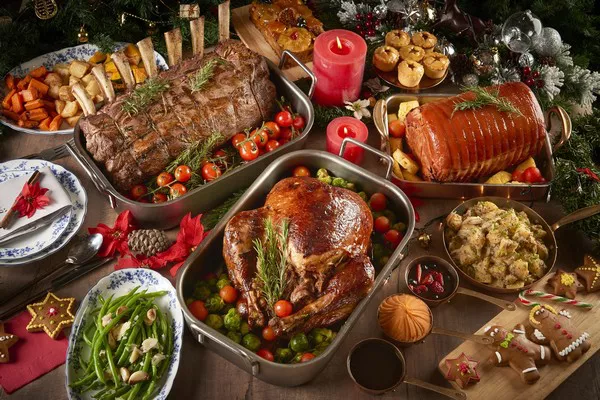Christmas is a festive season filled with joy, love, and delicious food. One of the most significant culinary traditions during this time of year is the choice of meat dishes that grace the tables of countless households around the world. From succulent roasts to flavorful hams and delectable poultry, the variety and significance of Christmas meats are as diverse as the cultures that celebrate this cherished holiday. In this article, we will delve into the different types of meat commonly enjoyed during Christmas festivities, exploring their origins, preparation methods, and cultural significance.
1. Roast Beef: A Classic Christmas Delicacy
Roast beef takes center stage on many Christmas dinner tables, particularly in English-speaking countries. This succulent and tender cut of meat is traditionally prepared by slow-roasting it in the oven, resulting in juicy slices with rich flavors. The practice of eating roast beef during Christmas dates back centuries, harking back to medieval feasts where a roasted boar or ox would be the centerpiece of the meal. Today, roast beef often symbolizes abundance and prosperity, making it an integral part of the Christmas feast.
2. Glazed Ham: A Sweet and Savory Treat
Another popular Christmas meat is glazed ham, which has its roots in European and American holiday traditions. Typically made from pork, a ham is cured, smoked, and then baked with a glaze made from ingredients like brown sugar, honey, mustard, or cloves. The sweet and savory combination of flavors creates a unique taste experience that perfectly complements festive celebrations. Glazed ham has become synonymous with Christmas in many Western cultures, evoking feelings of warmth, family gatherings, and indulgence.
3. Turkey: A Centerpiece of Thanksgiving and Christmas
While turkey is traditionally associated with Thanksgiving in the United States, it has also become a popular choice for Christmas meals in many countries. Roasting a whole turkey is a culinary art form that requires skill and patience. The bird’s large size allows it to feed multiple people, making it ideal for festive gatherings. The tradition of serving turkey during Christmas can be traced back to the 16th century in England when King Henry VIII was believed to have been the first English monarch to enjoy this exquisite bird during the holiday season. Since then, it has become a staple on Christmas tables around the world, symbolizing abundance, unity, and togetherness.
4. Goose: A Traditional European Christmas Delight
Goose has a long-standing association with Christmas in European culinary traditions. The goose’s rich, flavorful meat and crispy skin make it a coveted choice for those seeking a festive alternative to turkey or beef. In many European countries, particularly Germany and Austria, roasted goose has been a centerpiece of Christmas feasts for centuries. The tradition of serving goose during Christmas stems from its historical significance as a symbol of celebration, warmth, and hospitality.
5. Other Christmas Meats: Regional and Cultural Variations
Beyond the aforementioned staples, Christmas meats vary greatly depending on regional and cultural preferences. For instance, in Scandinavian countries like Sweden and Norway, dishes such as lutefisk (dried whitefish) and gravlax (cured salmon) are commonly enjoyed. In Italy, a succulent roast pork known as “porchetta” takes center stage, while in Spain, “cochinillo” (suckling pig) or “cordero lechal” (milk-fed lamb) are popular choices. In Latin American countries, roast pork or “lechón” holds a place of honor during the Christmas festivities. These regional variations reflect the unique culinary traditions and historical influences of each culture, adding to the diversity and richness of Christmas meat choices.
Conclusion:
Christmas is a time for celebration, and selecting the perfect meat dish for your festive feast is an integral part of the holiday tradition. Whether it’s roast beef, glazed ham, turkey, goose, or regional specialties, these meats bring families and friends together, creating lasting memories and cherished moments around the dinner table. The choice of Christmas meats reflects cultural heritage, culinary preferences, and historical customs, making it a truly global showcase of diverse flavors and traditions. So, as this festive season approaches, let us embrace the spirit of Christmas and savor the delectable meats that make this time of year even more special.

